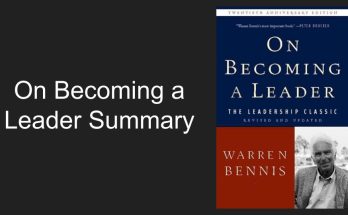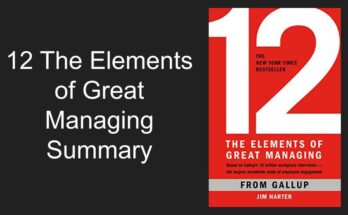The Dip book summary will include key ideas by Seth Godin about quitting.
My favorite quote from the book is “Winner quits all the time, They just quit the right stuff at the right time.”
The Dip by Seth Godin is all about strategic quitting.
In this short The Dip book summary we will learn when to stick with some ideas and when to quit them.
If the idea or something is worth doing there will be a dip, and we need to learn how to navigate through it successfully.
What we will learn in The Dip book summary?
- Quitting and pushing through
- Are you the best?
- Quitting is actually ok.
- The 3 Curves in life
- Getting through the dip.
- Seven reasons you might fail to become the best in the world.
- When should you quit?
- Are you a failure if you quit?
- Godin suggestions for questions to ask yourself.
Quitting and pushing through
Godin suggests that quitting can be strategic and can help you navigate your career toward a better future.
We all have at some point in life felt like giving up on the ideas, projects, or something we were working on.
There are tough times for everyone where giving up seems the only option.
However, Godin suggests pushing through these tough times will be rewarded with extraordinary benefits in the future.
On the other hand, Godin also suggests that if you know when to quit if it is not working, re-adjust and focus your energy on something else can also get you extraordinary benefits.
You need to have the courage to quit something early if it is not working.
As per Godin’s suggestion, the key is to keep going in tough times or quit early to get extraordinary results.
Quitting is often seen as a negative action, however, quitting can be strategic.
In this short the dip book summary, we will see How to quit, How to know when to quit and what are the benefits associated with quitting early.
Are you the best?
We live in a world where only superstars are celebrated, we always remember and recognize only the best of them, the number ones.
Unfortunately, we do not remember the 10th best or the 9th best, we may not even recognize them.
Godin explains all interviewers want the best candidates for their vacant roles, the best according to their world, and their perception of the best.
As a candidate, it becomes necessary to be the best as per their expectation to get selected.
You need to be the best choice for the interview for that role, situation, company, and job.
Quitting is actually ok
We always hear “Don’t quit”, “Keep going” and many more phrases, as quitting is seen as a negative aspect.

We are expected to keep working really hard, long, and with perseverance, quitting is not an option.
Godin has a different view, if success is just about working really hard, why many successful people and organizations are not putting in as much effort and time?
Godin also explains that you need to understand strategic quitting and how it can help to achieve success.
If you understand strategic quitting you might want to quit more than you currently are.
The 3 Curves in Life

To quit strategically, we need to understand and recognize situations that make people quit.
There are three curves in life to understand this better.
The Dip
When we start doing something, it usually seems fun and interesting in the beginning, but as time goes on and we face difficulties, it becomes increasingly hard to manage and get desired results.
This is the Dip.
Most of the time the Dip may look like an obstacle to getting the desired result, but in reality, if managed properly it can be a shortcut to success.
Godin explains when we start something new, let’s say a sport, or a blog, we are learning new things every day.

The Dip happens between when you started a task and you mastered one.
Sometimes it may feel like a really long slog, if you just keep going, it can be a shortcut to success.
The Cul-de-Sac
The Cul-de-sac is a French word that means a dead end.
No matter what amount of effort or hard work you do nothing seems to be improving or working.
In the Cul-de-sac there is no progress.
The Cliff
It is the edge of disaster, you are just one step away from it.
At the cliff, it becomes difficult to quit, until faced with a major disaster or things are about to fall apart.
For Example. A drug addict finds it hard to quit drugs until faced with major health or financial issues.
Getting through the Dip
People who get through the Dip get extraordinary results.
The cycle expects you to give up, quit, or stop, you just need to keep going while it is the Dip not any other curves we discussed earlier.

Getting through the Dip, may not be the cup of tea for everyone, however, who comes out of the dip is best in whatever they do.
Seven reasons you might fail to become the best in the world.
In the Dip book summary, we will now see the six reasons why you might fail to become the best in the world.
- You run out of funds (Money) and quit.
- You get scared and quit.
- You run out of time and quit.
- You are not serious enough about it and quit.
- You settle for being mediocre and quit.
- Your focus is more on short-term outcomes, when it becomes hard you quit.
- You don’t pick the things as per your talent and quit.
When you should quit?
In the dip book summary, we discussed that Godin is not suggesting that we should never quit, but quitting should be strategic.
You should quit if you are on the cul-de-sac or on the cliff.
If you are facing dead-end projects, or you can foresee that you are on the cliff from here it is going to fall. It is the right time to quit.
Are you a failure if you quit?
We often associate quitting with failure or a negative aspect.
However, it is not that you may be just giving priority to something more important.
You have assessed your situation, considered all options, and made the decision to quit.
Imagine working in a job where you do not get any career progression, salary revisions, or opportunity for growth. If you don’t quit this job you may not ever find out other opportunities available.
Failure is the very end of your dream, it means you have exhausted your resources, all the options, and efforts.
Godin’s suggestion: questions to ask yourself.
When assessing the situation of when to quit and when not, Godin has suggested 3 questions to ask yourself.
Am I panicking?
Ask yourself if you’re panicking and deciding to quit.
Because quitting when you are panicked can be expensive, just give it time let the panic pass, and continue slogging.
Who am I trying to influence?
Influencing a market is like climbing a hill, you have to keep on trying.
Ask yourself who you are trying to influence, are they not listening to you?
If you have tried everything and they are not listening it may be time to quit, or maybe you need to narrow down who to influence.
What sort of measurable progress am I making?
You can measure your progress in three parameters, you may be moving forward, falling behind or just standing still.
Who should read this book?
If you are someone who is dealing with more than two ideas at the same time, this is the best book you can read.
If you are not able to make the decision on whether to continue or quit, you should give this book a try.
Don’t have time to read, try The Dip by Seth Godin audiobook.
Read other book summaries here


